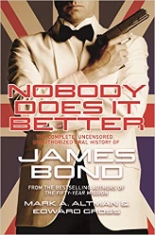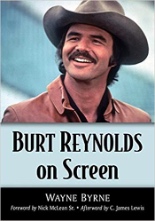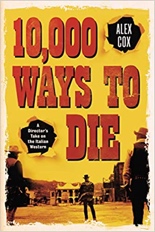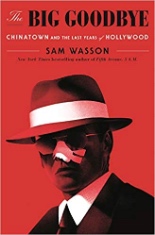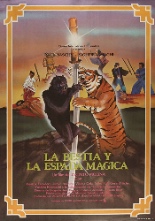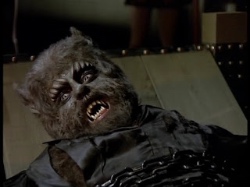
 To watch VHYes is to watch what happens when a boy named Ralph is gifted with a VHS camera for Christmas ’87 and proceeds to use his parents’ wedding video to record his harmless household pranks, all whoopee cushions and watermelons. Then he learns you can hook the camera up to record live TV, and the clips he captures as he channel-surfs is what we see.
To watch VHYes is to watch what happens when a boy named Ralph is gifted with a VHS camera for Christmas ’87 and proceeds to use his parents’ wedding video to record his harmless household pranks, all whoopee cushions and watermelons. Then he learns you can hook the camera up to record live TV, and the clips he captures as he channel-surfs is what we see.
That includes an aerobics exercise show, a crime procedural, a cowboy-themed kids’ series, a local newscast, a cloning sitcom titled Ten of the Same and the QVC-esque Goods Channel (complete with Puppet Master: The Littlest Reich’s Thomas Lennon playing pitchman). The standouts are the Antiques Roadshow-style What You Think This Might Be? (“This was a receptacle for hearts …”) and the Bob Ross parody Painting with Joan, with Role Models’ Kerri Kenney as an unhinged artist.
 Not everything Ralph (Mason McNulty, Assimilate) lands on is worth a flip; Interludes with Lou, a public access broadcast of an awkward teen (Charlyne Yi, Knocked Up) interviewing punk bands, goes on too long. That goes double for Blood Files, spoofing the true-crime documentary with the story of a supposedly haunted sorority house. More than making up for the dip are SFW scenes from a pair of porno movies, Sexy Swedish Illegal Aliens from Space: XXX and the global warming-themed Hot Winter, both expertly played to the deadpan hilt.
Not everything Ralph (Mason McNulty, Assimilate) lands on is worth a flip; Interludes with Lou, a public access broadcast of an awkward teen (Charlyne Yi, Knocked Up) interviewing punk bands, goes on too long. That goes double for Blood Files, spoofing the true-crime documentary with the story of a supposedly haunted sorority house. More than making up for the dip are SFW scenes from a pair of porno movies, Sexy Swedish Illegal Aliens from Space: XXX and the global warming-themed Hot Winter, both expertly played to the deadpan hilt.
From a hair-growth product to a home security system, commercials appear here and there, none more notable than the Susan Sarandon-narrated spot for the Soundwall 2000, which shields your lover’s ears from hearing you poop. You get all of this and more — psychotic break included — in an über-economical 72 minutes! Director and co-writer Jack Henry Robbins (son of Sarandon and Tim Robbins, unrecognizable in his cameo) may not know how to end his cathode-ray circus — and I didn’t want him to — but up until then, he expertly orchestrates the anarchy in which anything goes … as long as everything takes a dark turn. Fans of modern absurdist humor like The State, Tim and Eric Awesome Show, Great Job! and, well, anything on Adult Swim will take to it like metal fillings to a magnet. It’s like Amazon Women on the Moon with injections and/or ingestions of AFV, ADD, LSD, OMG and WTF. —Rod Lott

